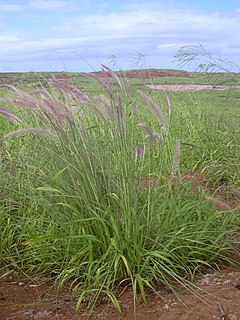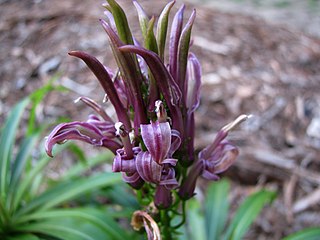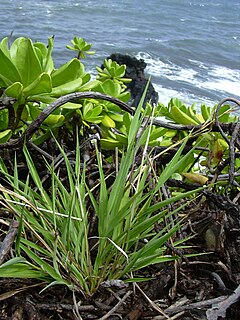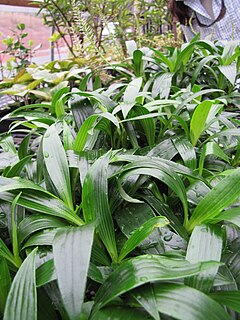| Silene lanceolata | |
|---|---|
 | |
| Scientific classification | |
| Kingdom: | Plantae |
| (unranked): | Angiosperms |
| (unranked): | Eudicots |
| (unranked): | Core eudicots |
| Order: | Caryophyllales |
| Family: | Caryophyllaceae |
| Genus: | Silene |
| Species: | S. lanceolata |
| Binomial name | |
| Silene lanceolata A.Gray | |
Silene lanceolata is a rare species of flowering plant in the pink family known by the common names Kauai catchfly [1] and lanceolate catchfly. It is endemic to Hawaii, where it is known only from Oahu, Molokai, and Hawaii, having been extirpated from Kauai and Lanai. It is threatened by the degradation of its habitat and it is a federally listed endangered species of the United States. [2]

Caryophyllaceae, commonly called the pink family or carnation family, is a family of flowering plants. It is included in the dicotyledon order Caryophyllales in the APG III system, alongside 33 other families, including Amaranthaceae, Cactaceae, and Polygonaceae. It is a large family, with 81 genera and about 2,625 known species.

Endemism is the ecological state of a species being unique to a defined geographic location, such as an island, nation, country or other defined zone, or habitat type; organisms that are indigenous to a place are not endemic to it if they are also found elsewhere. The extreme opposite of endemism is cosmopolitan distribution. An alternative term for a species that is endemic is precinctive, which applies to species that are restricted to a defined geographical area.

Hawaii is the 50th and most recent state to have joined the United States, having received statehood on August 21, 1959. Hawaii is the only U.S. state located in Oceania, the only U.S. state located outside North America, and the only one composed entirely of islands. It is the northernmost island group in Polynesia, occupying most of an archipelago in the central Pacific Ocean.
This subshrub grows 15 to 50 centimeters tall and bears white flowers. It grows on the lava and ash substrates of the volcanoes of the island of Hawaii. It grows in dry and moist forests on cliffs and slopes on Oahu and Molokai. [2] Most known populations occur at the Pohakuloa Training Area on Hawaii, for a total of just over 10,000 individuals. There are four populations on Oahu. There are fewer than 1000 individuals on Molokai. [3]

A shrub or bush is a small- to medium-sized woody plant. Unlike herbs, shrubs have persistent woody stems above the ground. They are distinguished from trees by their multiple stems and shorter height, and are usually under 6 m (20 ft) tall. Plants of many species may grow either into shrubs or trees, depending on their growing conditions. Small, low shrubs, generally less than 2 m (6.6 ft) tall, such as lavender, periwinkle and most small garden varieties of rose, are often termed "subshrubs".

Lava is molten rock generated by geothermal energy and expelled through fractures in planetary crust or in an eruption, usually at temperatures from 700 to 1,200 °C. The structures resulting from subsequent solidification and cooling are also sometimes described as lava. The molten rock is formed in the interior of some planets, including Earth, and some of their satellites, though such material located below the crust is referred to by other terms.

Volcanic ash consists of fragments of pulverized rock, minerals and volcanic glass, created during volcanic eruptions and measuring less than 2 mm (0.079 inches) in diameter. The term volcanic ash is also often loosely used to refer to all explosive eruption products, including particles larger than 2 mm. Volcanic ash is formed during explosive volcanic eruptions when dissolved gases in magma expand and escape violently into the atmosphere. The force of the escaping gas shatters the magma and propels it into the atmosphere where it solidifies into fragments of volcanic rock and glass. Ash is also produced when magma comes into contact with water during phreatomagmatic eruptions, causing the water to explosively flash to steam leading to shattering of magma. Once in the air, ash is transported by wind up to thousands of kilometers away.
Threats to the plant include fire in some areas. Fire also fosters the takeover of invasive plant species such as Pennisetum setaceum (fountain grass), which displaces native plants; the flammable fountain grass then increases the likelihood of more fire. Feral goats and pigs cause destruction in the habitat. The plant faces competition from other species of non-native plants on the islands. [3]

An invasive species is a species that is not native to a specific location, and that has a tendency to spread to a degree believed to cause damage to the environment, human economy or human health.

Pennisetum setaceum, commonly known as crimson fountaingrass, is a C4 perennial bunch grass that is native to open, scrubby habitats in East Africa, tropical Africa, Middle East and SW Asia. It has been introduced to many parts of the world as an ornamental plant, and has become an invasive species in some of them. It is drought-tolerant, grows fast, reaches 3 feet in height, and has many purple, plumose flower spikes.

The feral goat is the domestic goat when it has become established in the wild. Feral goats occur in Australia, New Zealand, Ireland, Great Britain, Hawaii, Brazil, Honduras, Lebanon, Panama, Madagascar, Comoro Islands, Mauritius, Réunion, New Guinea, the Galapagos, Cuba and in many other parts of the world. When feral goats reach large populations in habitats which are not adapted to them, they may become an invasive species with serious negative effects, such as removing native scrub, trees and other vegetation. Feral goats are included in the 100 of the World's Worst Invasive Alien Species. However, in other circumstances they may become a natural component of the habitat, even replacing locally extinct wild goats. Feral goats are sometimes used for conservation grazing, to control the spread of undesirable scrub or weeds in open natural habitats such as chalk grassland and heathland.















